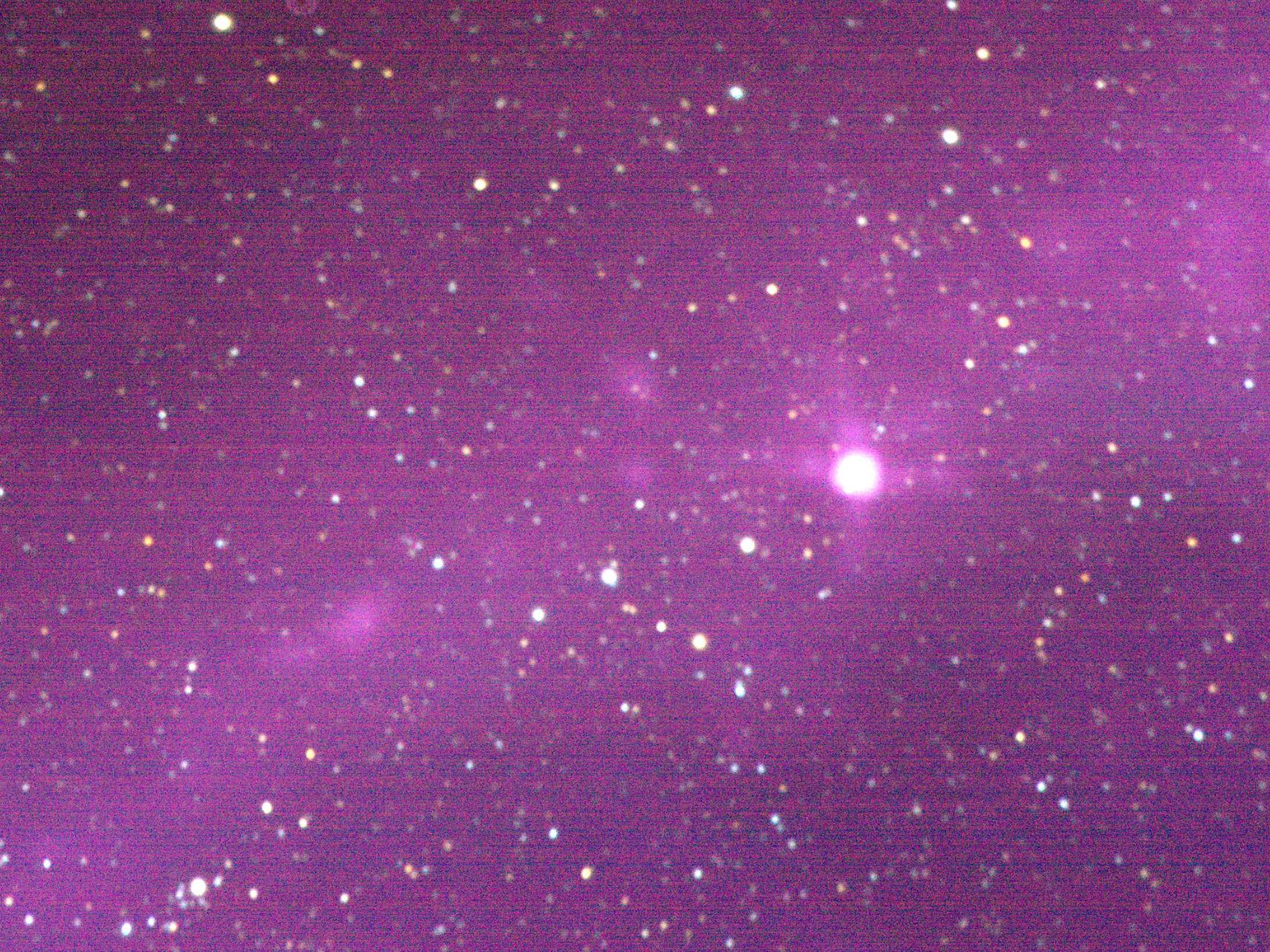This image of the Cassiopeia constellation cames from the new upgraded campus planetarium, supported by a Shineman Endowed Fund grant. (Courtesy of Natalia Lewandowska)
Recent software updates and renovations to SUNY Oswego’s Shineman Planetarium have provided expanded technology, ease-of-use and additional learning opportunities for students in the university's astronomy minor.
Planetarium shows, which are free and open to the public, take place at 6 p.m. on Tuesdays and Thursdays during semesters.
Natalia Lewandowska, the planetarium’s director and assistant professor of physics at SUNY Oswego, said that the upgrade process began more than a year ago, and started with learning about the limitations of Starry Night, the then-current software used by the planetarium.
“I went with the late Dr. [Scott] Roby [the previous planetarium director] to a workshop in Chadds Ford, Pennsylvania, where the company from which we had bought software in the past, Spitz Inc., is based,” Lewandowska said.
At that workshop, Lewandowska learned that the acquisition of Spitz Inc., which created Starry Night, by another planetarium company, Cosm, meant that the platform would no longer be supported, replaced by an updated planetarium software system Digistar.
Thanks to a grant from the Shineman Endowed Fund, the planetarium upgrades include the software itself, computers to run the program and updated Windows iterations for each new computer.
“The whole planetarium is basically working on two computers; both these computers were completely exchanged, and the new software, Digistar 7, was delivered with these,” Lewandowska said.
“We had a colleague here from Spitz Inc. here for about a week in August, and during that time he took out all of the old components, put the new stuff in, and then he checked all of the software to see if it was working,” Lewandowska said. “On Friday morning, he gave me the opportunity to test it and play with it.”
Evolving technology
The upgrade reflects a world where software and solutions evolve rapidly, Lewandowska said. The proper functioning of the planetarium is not only crucial to its educational value but also in continuing SUNY Oswego’s legacy of featuring a planetarium, Lewandowska said.
“SUNY Oswego has had eight planetariums since the 1960s,” Lewandowska said.
“My colleagues had already asked once for money before my arrival [to teaching at SUNY Oswego] from the Shineman Foundation for a grant for a full upgrade,” Lewandowska said. Unfortunately, a full system upgrade of computers, software and projector proved cost prohibitive.
The upgrade plans were altered to feature the most crucial components first, and were ultimately successful, Lewandowska said.
“We decided to split the costs and ask for what is really necessary right now, like the software and computers, and then the next step, which we are working on now, is that we are searching for funds to replace the projector, which is 10 years old now,” Lewandowska said.
The new software is not only continually upgraded, but also has new features, like connecting the planetarium to the internet for the first time ever, Lewandowska said. Being connected to the internet, the planetarium software can be worked on by technicians from Spitz Inc. without them being physically present, Lewandowska said.
“If something doesn’t work, we can submit a ticket online to Spitz Inc., so they can log into our planetarium, see what’s going on and fix it, just like on-site help,” Lewandowska said.
The planetarium’s online connection also allows for greater sophistication and cooperation in creating planetarium shows. The new software, Digistar 7, includes access to a cloud-based database of community-created assets and continually updated international astronomical data, which allows the planetarium to display different data and offer planetarium shows that exhibit astronomy in new ways, Lewandowska said.
“When we look at the Milky Way, we can switch off visible light, and switch on gamma ray light, so we can see the Milky Way as if we had gamma ray eyes, which we don’t,” Lewandowska said. “We can combine what we show with actively collected data that we did not have before.”
Opportunities for students
The new software has also spurred the creation of new learning opportunities for SUNY Oswego students studying astronomy, Lewandowska said.
“We are planning to offer a planetarium course in the fall of next year, and students will learn how to make their own [planetarium] shows, and this class will be available for students who want to minor in astronomy,” Lewandowska said.
The planetarium’s new cooperative software allows for Digistar 7 users to share assets in creating planetarium shows, allowing SUNY Oswego to create more expansive shows, and foster learning in how to use the program and astronomy as a whole, Lewandowska said.
“There is a very active Digistar community, and SUNY Oswego is a part of it because it is really important that you never stop learning about this stuff,” Lewandowska said.
In addition, the planetarium will host shows on the day of the total solar eclipse, April 8, as part of campus activities. Visit the SUNY Oswego elipse page for more information.
-- Written by Ethan Semeraro of the Class of 2023




